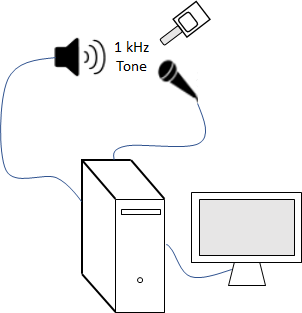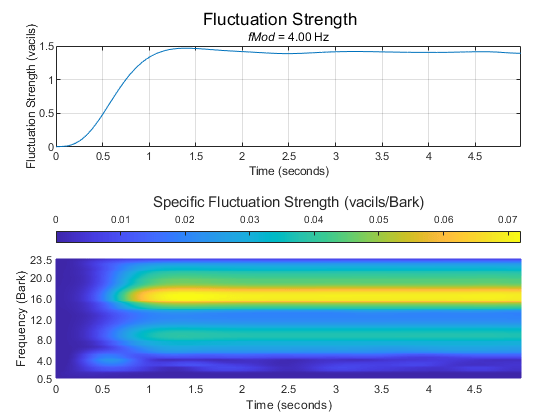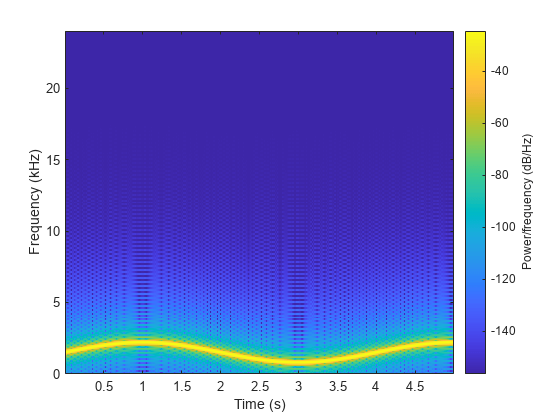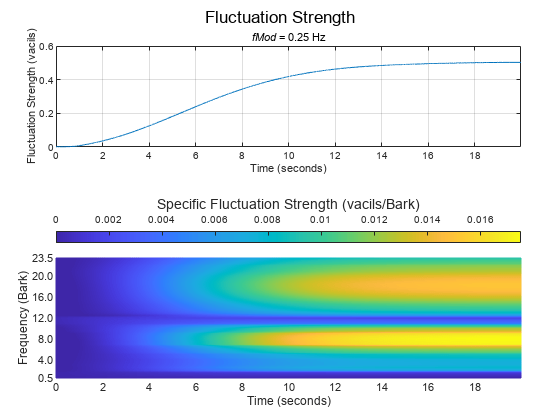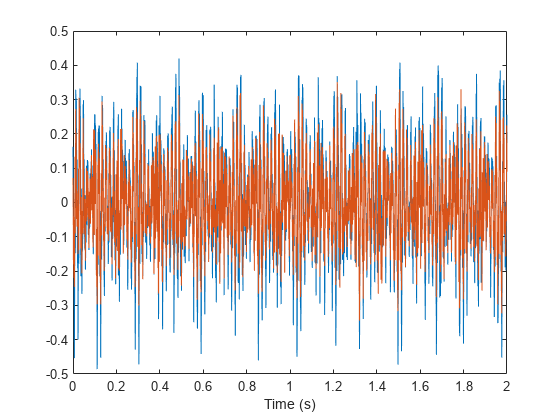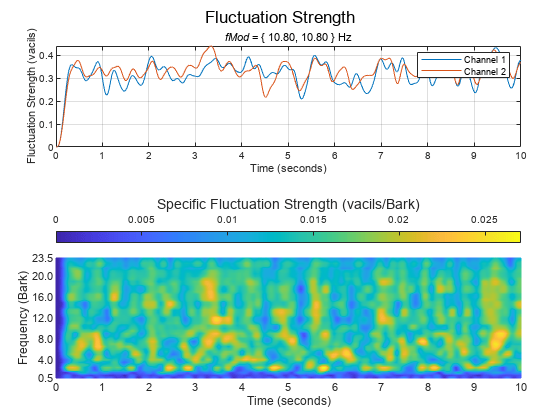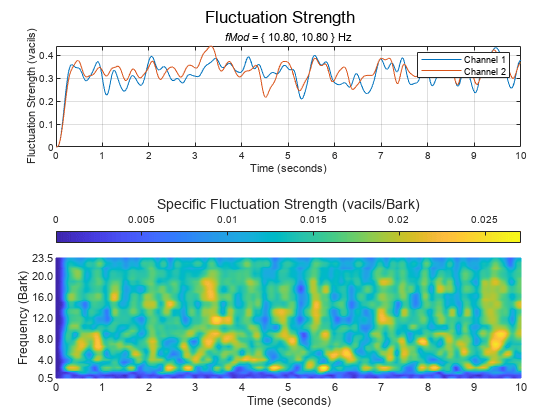acousticFluctuation
Perceived fluctuation strength of acoustic signal
Syntax
Description
fluctuation = acousticFluctuation(audioIn,fs)
fluctuation = acousticFluctuation(audioIn,fs,calibrationFactor)
fluctuation = acousticFluctuation(specificLoudnessIn)
fluctuation = acousticFluctuation(___,Name,Value)Name,Value pair arguments.
Example: fluctuation =
acousticFluctuation(audioIn,fs,'SoundField','diffuse') returns fluctuation
assuming a diffuse sound field.
[
also returns specific fluctuation strength.fluctuation,specificFluctuation] = acousticFluctuation(___)
[
also returns the dominant modulation frequency.fluctuation,specificFluctuation,fMod] = acousticFluctuation(___)
acousticFluctuation(___) with no output arguments
plots fluctuation strength and specific fluctuation strength and displays the modulation
frequency textually. If the input is stereo, the 3-D plot shows the sum of both
channels.
Examples
Input Arguments
Name-Value Arguments
Output Arguments
Algorithms
Acoustic fluctuation strength is a perceptual measurement of slow modulations in amplitude
or frequency. The acoustic loudness algorithm is described in [1] and implemented in the
acousticLoudness
function. The acoustic fluctuation calculation is described in [2]. The algorithm for acoustic
fluctuation is outlined as follows.
Where fmod is the detected or
known modulation frequency and ΔL is the perceived modulation depth. If the
modulation frequency is not specified when calling acousticFluctuation,
it is auto-detected by peak-picking a frequency-domain representation of the acoustic
loudness. The perceived modulation depth, ΔL, is calculated by passing
rectified specific loudness bands through ½ octave filters centered around
fmod, followed by a lowpass filter to determine
the envelope.
References
[1] ISO 532-1:2017(E). "Acoustics – Methods for calculating loudness – Part 1: Zwicker method." International Organization for Standardization.
[2] Zwicker, Eberhard, and H. Fastl. Psychoacoustics: Facts and Models. 2nd updated ed, Springer, 1999.
Extended Capabilities
Version History
Introduced in R2020b
